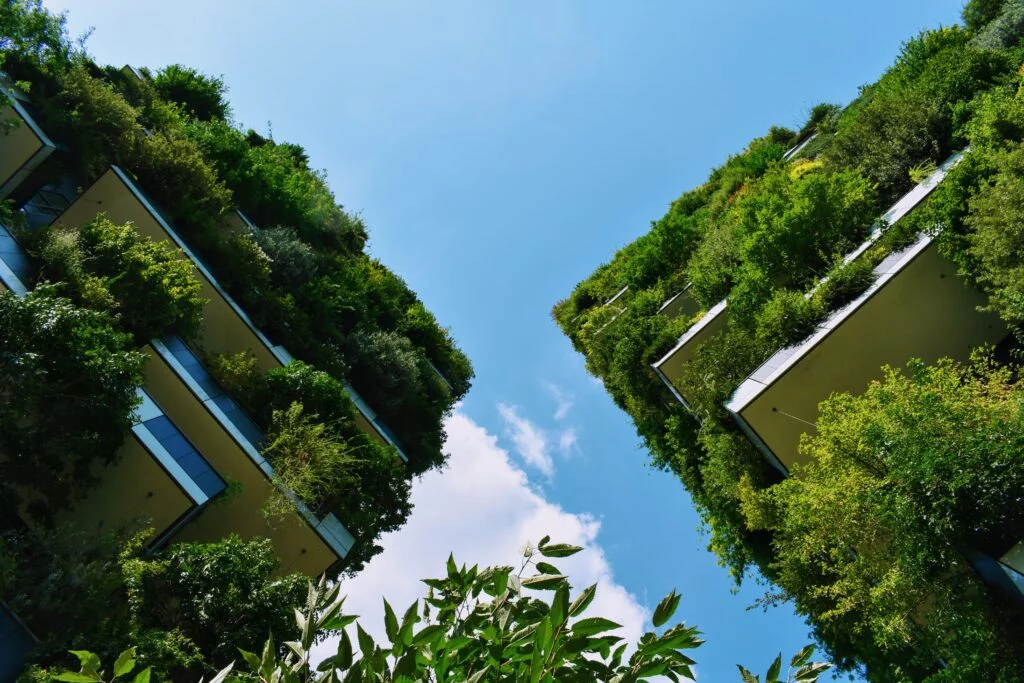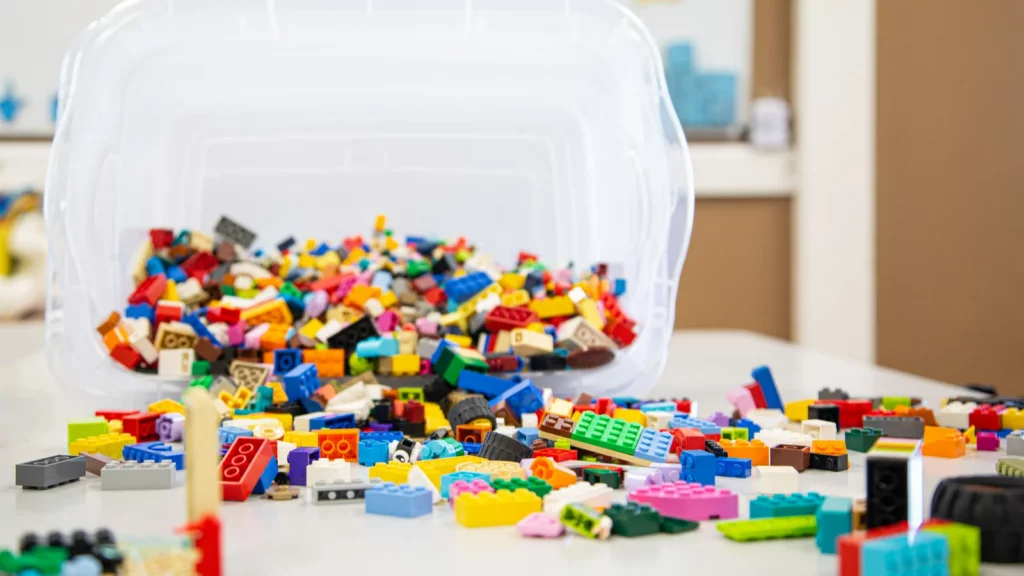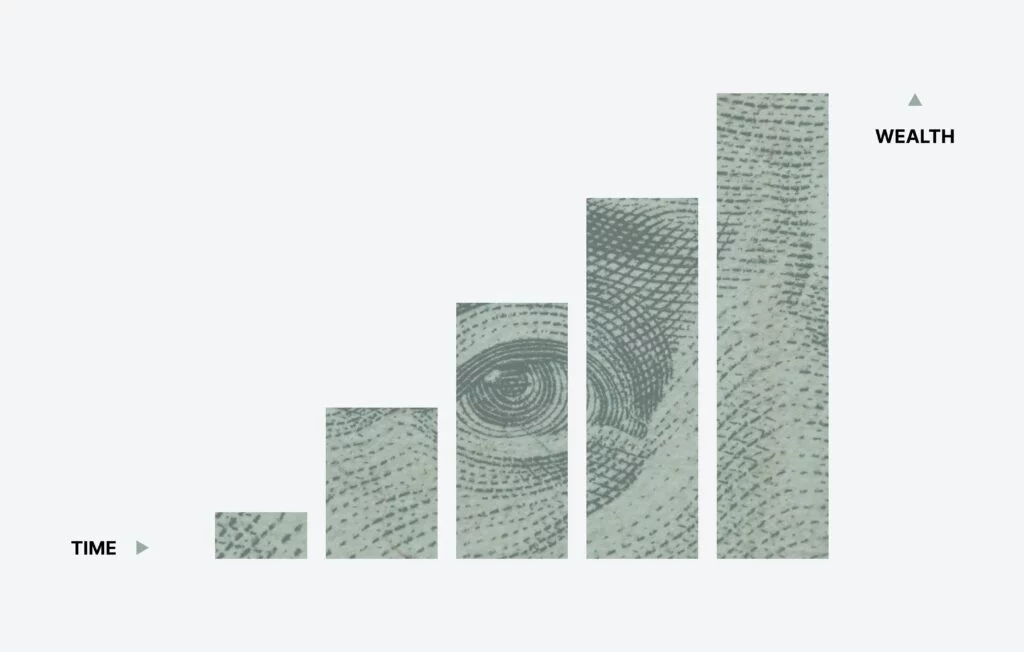What Is Circular Construction and Why Is It Important [+ 4 Tips To Start]

For years, we’ve been producing new products, only to use them for a short time, throw them away and start over again. And let’s face it, it worked. Until we began to notice the harmful effects on our planet and our economy.
With energy and raw material prices skyrocketing and increasing delays due to resource shortages, it’s time for things to change. If you ever did a quick Google search on it, you undoubtedly stumbled across the term circular building. With good reason. After all, this sustainable way of building involves fewer resources, energy, and waste.
But what exactly is circular construction? And why has it suddenly become the talk of the town? In this post, you’ll find out what exactly circularity means, why it is so crucial in the construction sector and how you can get started yourself.
Looking for sleek office pods for your office? Browse our selection of phone booths and meeting pods.
What Is Circularity?
Circularity, also known as circular economy, is a system in which raw materials and products are kept in the cycle as long as possible. Unlike the linear economy, in which we process raw materials into a product we throw away after use, the circular economy focuses on reusing products and raw materials with a minimal loss of value.
When we look at circular construction, the same rules apply. By operating in closed-loop cycles, raw materials and products can stay in the construction cycle for much longer. That’s because we don’t throw them away but reuse them, recycle them or give them a new purpose.
Circular building refers to all phases of the building cycle. This goes from the derivation of raw materials through the design and construction of the building to its reuse.
The 3R-Principle: Reduce, Reuse, Recycle
The circular world often refers to the 3R principle: Reduce, Reuse and Recycle. These three terms serve as a starting point if you want to put circularity into practice.
Reduce
The construction industry accounts for almost half of the raw materials used worldwide. As a result, it’s essential to create or divide buildings with as few resources as possible.
The same principle applies to the production of new materials. A product with fewer parts requires fewer raw materials and creates less waste afterward. The reduce principle can be applied both during the design and production phases.
Reuse
Products still in good condition can be reused a second, third, fourth, … time. The most well-known form of this is the passing on of items via second-hand platforms. But over the years, it has also become a widespread concept in the construction industry.
The idea is simple: by working with reusable materials, you need fewer resources and will reduce your energy consumption drastically. Compare it to a set of Lego blocks: you can build ongoing projects, break them apart, and start over again. The same can be said for reusable materials or products.

Recyle
When raw materials or products cannot be reused, it’s a good idea to recycle them. The materials are then processed into products of the same (high-value) or less (low-value) quality.
Yet recycling should always be the last option in your sustainability strategy. That’s because recycling products or materials also requires energy and produces a certain amount of CO2 emissions. It’s better to avoid waste from the very start. After all, materials that are never made should never be reprocessed.
The idea is simple: by working with reusable materials, you need fewer resources and will reduce your energy consumption drastically. Compare it to a set of Lego blocks: you can build ongoing projects, break them apart, and start over again. The same can be said for reusable materials or products.
From 3R to 7R
In recent years, we have seen new terms pop up in this model. For example, many scientists shifted from a 3R model to a 7R model with Rethink, Refuse, Repair, and Repurpose completing the list. That’s a positive sign because it demonstrates that circularity is being integrated into more and more cycle layers.
Why Is Circularity Important in Construction?
The construction industry is responsible for as much as 40% of CO2 emissions. In addition, roughly half of all raw materials and about 40% of the available energy is used in construction. By making circular construction the norm, we can create a significant shift.
The idea of circular construction isn’t new. Yet, for a long time, there was this idea in the construction sector that building was for eternity. In practice, however, that turns out not to be the case. Materials in buildings are replaced, or at worst, entirely demolished to make way for new construction.
In many cases, however, the existing structures are still perfectly usable. Just look at the project Conix RDBM Architects carried out a few years ago.
3 Benefits of Circular Construction
1. Benefits On Climate
By building circularly, we consume far fewer raw materials. Instead of throwing materials away after use, we focus on reusing them. By not producing new materials, CO2 emissions are reduced and less energy is needed. Energy-efficient construction also ensures that we use less energy during the lifespan of the building.
2. Financial Benefits
Reusing materials offers a significant financial advantage for manufacturers, project developers, and contractors. Because the materials can be dismantled after use, the materials only have to be produced or purchased once. This allows you to develop projects with the materials you’ve used in previous projects.
As soon as the materials are given a second life, profit is made. Similarly, buildings can be given a second life too. By giving them a new function, there is no need to construct a new building.

3. Social Benefits
One often overlooked benefit is that circular construction also has social implications for our society. Circular construction creates more local jobs and social employment. People who work in a sheltered workshop can perfectly execute many modifications for reuse.
4 Tips to Implement Circularity in Your Projects
Are you convinced about circular construction but need help figuring out where to start? We share four tips to get you started.
1. Keep Reuse in Mind From The Start
Each step in the circular process begins with the design of the building. Do you opt for materials that can be easily adapted? Can you dismantle and reuse those building materials afterward? Are you working with sustainable materials that will last a long time?
By taking reuse into account from the beginning, you avoid depleting raw materials and use them as efficiently and effectively as possible. Repeat this in all steps of the construction cycle so that no precious materials are lost.
2. Engage in Sustainable Collaborations
Constructing a fully circular project can only be done by collaborating with all parties involved. Circularity must extend through the entire construction cycle, from investors to designers and contractors.
An excellent example of this is Kamp C. In this project, no less than seven different parties worked together. The building has three floors and a total area of 2,400 square meters. It is the first fully circular building in Flanders. Its success is mainly due to close collaboration through digital tools.
3. Implement Digital Tools
Digital tools help integrate circularity into your projects. The introduction of BIM, also called the Building Information Modeling system, is a great example. This system aggregates all the data of a building, such as the foundations, structures, walls, and windows, but also the techniques, electricity, the heat pump, etc. It helps the cooperation between all construction partners.
As a result, you are faced with far fewer errors on-site. This saves you time and money, as well as energy and raw materials. Moreover, thanks to the materials passport, you also discover the possibilities for those who will later take on the demolition or repurposing of the building.
4. Put A Residual Value On Your Products
To implement circularity in your business, you must put a residual value on your products. For example, if you buy back a product at 20 euros and sell it again for 80 euros, you make money. That may sound simple, but it is the opposite of what we do today in the linear economy.
Residual value is, therefore, one of the basic principles within the circular economy and offers you significant financial advantages. As soon as you let your products start their second life cycle, you will be ahead of your competitors.
Ready to make the shift to circular construction?
Circular construction plays an essential part in addressing climate issues. It also creates some attractive competitive advantages. Anyone who invests in the circular economy today will overtake the competition in no time, especially when your products or materials start their second life cycle. Find partners, invest in digital tools and dare to question your current way of working.
Residual value is, therefore, one of the basic principles within the circular economy and offers you significant financial advantages. As soon as you let your products start their second life cycle, you will be ahead of your competitors.
Gerelateerde posts

Budgetproof en effectief: 5 kantoorhacks
5 valkuilen bij low-budget kantoorinrichting Een kantoor inrichten met een beperkt budget? Dat kan verrassend goed uitpakken… als je het slim aanpakt. Maar wie halsoverkop

De ideale kantoorflow
De ideale kantoorflow, hoe zit dat precies? Een goed ingericht kantoor gaat vandaag over veel meer dan esthetiek of ergonomie. In een wereld van hybride

Kantoortrends: duurzaam, modulair & slim
Kantoortrends: zo ziet de werkplek van de toekomst eruit Hoe werken we in 2025 en wat brengt de toekomst? De voorbije jaren zijn onze verwachtingen
